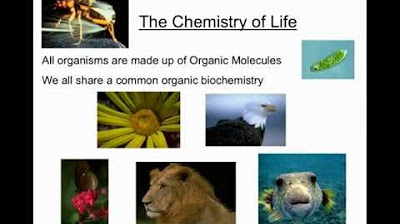Metallic Bonding
Summary
TLDRIn this chemistry essentials video, Mr. Andersen explains metallic bonding through the electron sea model, where delocalized electrons are shared among metal atoms. This model accounts for metals' conductivity, malleability, ductility, and low volatility. However, the shell model is necessary to understand anomalies in melting points across transition metals. The video explores how electron configurations, particularly unpaired electrons in d orbitals, affect these properties, with a focus on the transition from high to low melting points as electrons fill and pair in the d subshells.
Takeaways
- 🔬 Metallic bonding involves a number of atoms sharing their electrons, forming a 'sea of electrons'.
- 🌊 The electron sea model is the primary way to visualize metallic bonding, where electrons are delocalized and free to move.
- ⚡ Metals exhibit high conductivity due to the presence of free electrons that can easily flow through the material.
- 🔨 Malleability in metals is explained by the electron sea model, allowing atoms to slide past each other when hammered.
- 🔩 Ductility is the property of metals to stretch rather than break when pulled, due to the freedom of atoms to move around each other.
- 🔥 Metals have low volatility, which means they have high melting and boiling points, attributed to the strong attraction between the sea of electrons and the positive charges in the nucleus.
- 📉 The electron sea model does not fully explain the variation in melting points across transition metals, necessitating the shell model for a complete understanding.
- 📚 The shell model becomes important when discussing the electron configurations of transition metals, especially to explain anomalies in melting points.
- 🌐 The electron configurations of transition metals often involve unpaired electrons in d orbitals, contributing to their metallic properties.
- 📉 The melting point of transition metals does not consistently increase with the number of electrons; it can dip, as seen with chromium, due to its unique electron configuration.
- 🚫 As we move towards nonmetals, like zinc, the properties of metals start to change, showing a deviation from typical metallic behavior.
Q & A
What is the electron sea model in the context of metallic bonding?
-The electron sea model is a way to visualize metallic bonding where electrons are delocalized and shared among a number of atoms, creating a 'sea' of electrons that are free to move within the structure of the metal.
Why can't there be just one metallic bond?
-Metallic bonds involve a collective sharing of electrons among multiple atoms, so there must be a group of atoms to form this type of bond, not just one.
What properties of metals does the electron sea model account for?
-The electron sea model accounts for properties such as conductivity, malleability, ductility, and low volatility of metals.
How does the electron sea model explain the conductivity of metals?
-In the electron sea model, the free electrons can easily flow through the metal, which allows for the conduction of electricity and heat.
What does malleability mean in terms of metals?
-Malleability refers to the property of metals that allows them to be hammered or rolled into thin sheets without breaking, due to the smooth sliding of atoms in the metallic bond.
What is ductility, and how does it relate to metallic bonding?
-Ductility is the property of metals that enables them to be stretched into wires without breaking. It is related to metallic bonding because the atoms have the freedom to move around each other, allowing the metal to stretch rather than fracture.
Why do metals have low volatility?
-Metals have low volatility because of the strong electrostatic attraction between the positively charged protons and the delocalized negatively charged electrons, making it difficult to separate the atoms and turn the metal into a liquid or gas.
How does the electron sea model relate to the melting point of metals?
-The electron sea model suggests that metals with more free electrons should have higher melting points due to the stronger electrostatic attraction. However, this is not always the case, and the shell model is sometimes needed to explain variations in melting points.
What is the significance of unpaired electrons in transition metals?
-Unpaired electrons in transition metals contribute to the properties of metals by allowing for greater freedom of movement of electrons within the electron sea, which is essential for metallic bonding and the associated properties.
Why does the melting point of metals not consistently increase as you move across the transition metals?
-The melting point of metals does not consistently increase across the transition metals because factors such as electron configuration and the stability of the electron shell structure can influence the melting point more than just the number of valence electrons.
What is the difference between the electron sea model and the shell model in explaining metallic bonding?
-The electron sea model focuses on the delocalized electrons shared among metal atoms, while the shell model delves into the specific electron configurations within the atoms, which can help explain phenomena like variations in melting points that the electron sea model cannot account for.
Outlines

This section is available to paid users only. Please upgrade to access this part.
Upgrade NowMindmap

This section is available to paid users only. Please upgrade to access this part.
Upgrade NowKeywords

This section is available to paid users only. Please upgrade to access this part.
Upgrade NowHighlights

This section is available to paid users only. Please upgrade to access this part.
Upgrade NowTranscripts

This section is available to paid users only. Please upgrade to access this part.
Upgrade Now5.0 / 5 (0 votes)





